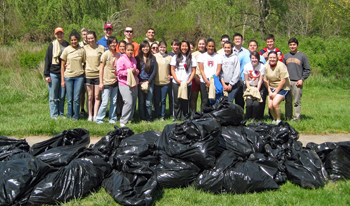
Contributed by Susan Posey, Redeemer Lutheran, McLean
A local volunteer group, Fairfax Tree Rescuers, has launched an initiative called the Fairfax Partnership for Regional Invasive Species Management (PRISM). They will be holding a number of removal events throughout Fairfax County the week of November 8 through 16, 2025.
Volunteers are asked to register for the events and to wear long sleeves, closed toe shoes and insect repellant. Tools from home, such as loppers, clippers and pruning saws are welcome, but no power tools, please. For a complete list of the PRISM events this week and to register, please visit: www.fairfaxprism.org/upcoming-events. You can also sign up for their newsletter.
The Fairfax County Park Authority also has a volunteer program for invasive plant removal on its properties. You can learn more about the program at www.fairfaxcounty.gov/parks/invasive-management-area.
Care for the environment is just one of the values held in common by the faith traditions of Tysons Interfaith. To learn more about Tysons Interfaith and about local interfaith events, please consider signing up for our monthly newsletter at LINK.
This blog post is the expressed opinion of its writer and does not necessarily reflect the views of Tysons Interfaith or its members.
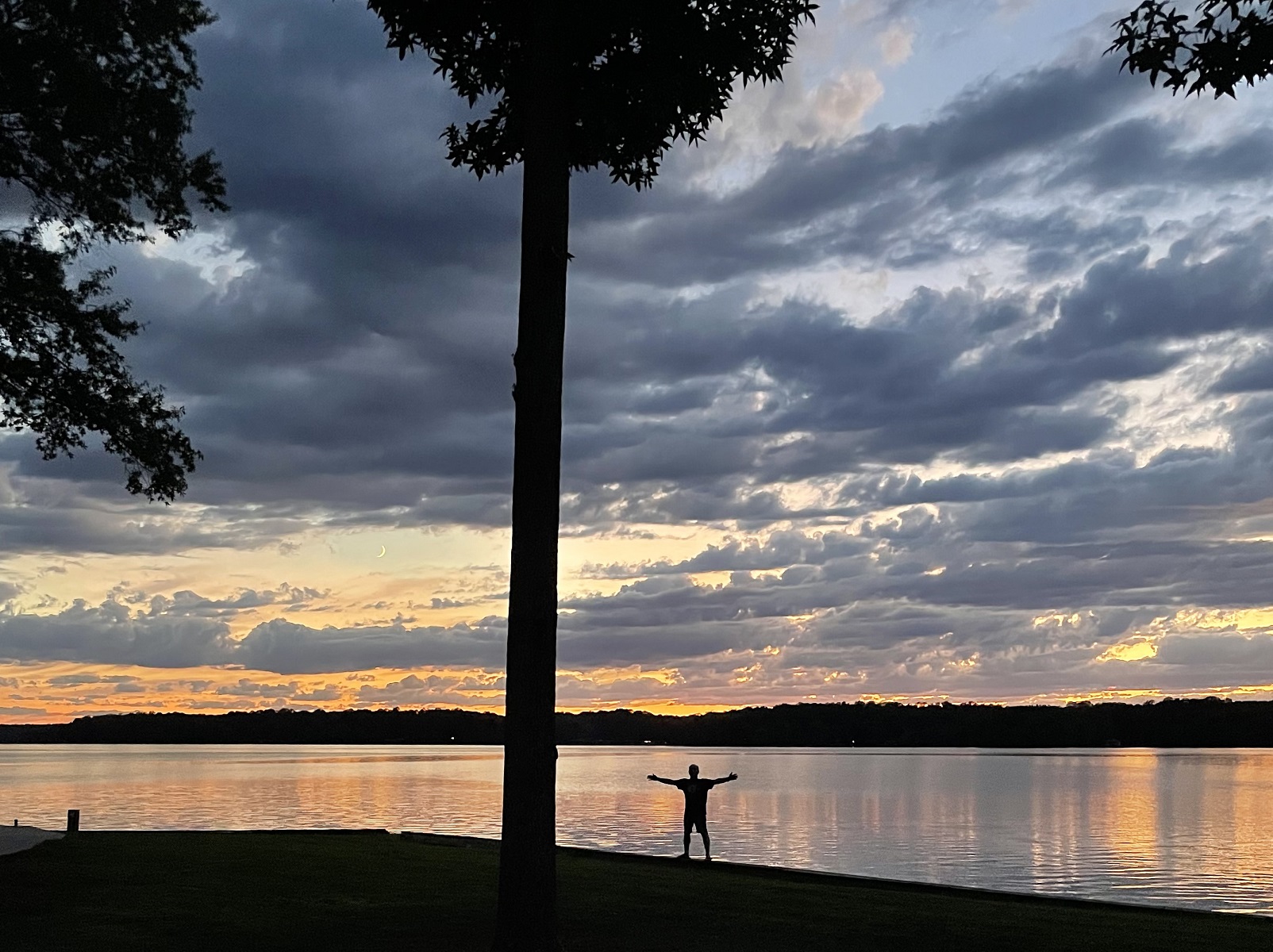
This past summer at McLean Baptist Church we did a series of Sunday morning group studies titled ‘Kaleidoscope of Faith.’ I had the pleasure of presenting the last session of the series and the topic I chose was Faith & Gratitude. Some of the other sessions included Faith & Travel, Faith & Science, Faith & Storytelling and even Faith & Spies.
I began by giving this specific definition of what I mean by gratitude – the feeling you experience when you acknowledge having something that’s valuable to you and that came to you as a gift. Whatever it is, you did not get it through any kind of transaction and it’s not anything that you feel is owed to you.
The first slide in my presentation was the image at the top of this post. This is a picture my son took of me on the evening of 8/25/25 on the shore of Lake Anna at sunset. The view was particularly beautiful that evening and if you look closely, you can see the crescent moon that was setting behind the sun. As another person in our group moved closer to the water to get a different view I noticed his silhouette so I quickly gave my phone to my son and asked him to take a picture of me as I struck a pose at the water’s edge. Looking at this picture now I see myself in a posture of gratitude.
10 minutes of my presentation was showing this video, a Ted Talk from 14 years ago by Louie Schwartzberg on gratitude. It is filled with beautiful time lapse photography and is narrated by Brother David Steindl Rast. Here’s a quote from Louie – “Gratitude unlocks the beauty of life. It turns what we have into enough.” and here’s a quote from David – “It’s not happiness that makes us grateful, it’s gratefulness that makes us happy.”
I also took a few minutes to point out the connection between remembering and gratitude. At some point in your life, someone taught you the spiritual disciplines that you practice today. That person may have been a leader, a friend, a grandmother, a pastor, or someone who is no longer with us. We should never forget them and the influence they’ve had on us. In the midst of the pace of work, errands, new friendships, and personal challenges, it can be easy to forget our roots.
Remembering is a form of humility and gratitude. We honor the efforts of those who have invested in our lives when we live with purpose, when we seek to grow, when we share what we learned. Today, think about the person or persons who left an imprint on your spirit. Perhaps it is time to write to them, to pray for them, or simply to give thanks in silence. Their influence is still alive in you, and now you can be that voice for someone else.
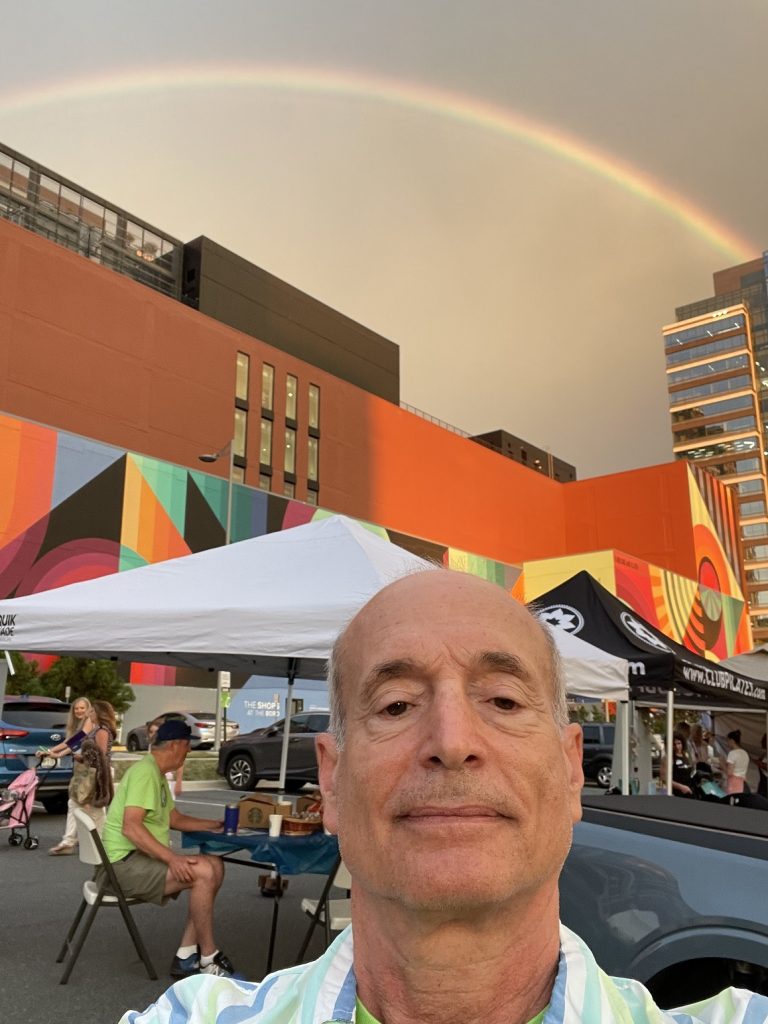
P.S. World Gratitude Day will be celebrated on Sunday, 9/21/25
This blog post is the expressed opinion of its writer and does not necessarily reflect the views of Tysons Interfaith or its members.
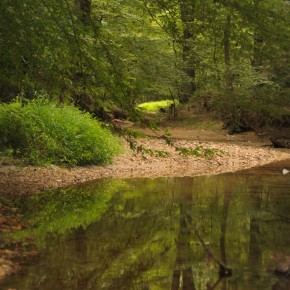
Contributed by Stephen Wickman, St. Thomas Episcopal, McLean
This Sunday morning while walking my son’s ever-curious dog along the well-lit, beautifully engineered Vesper St. trail, which connects Route 7 and the toney suburbs of Vienna, I was not surprised to see an “unhoused” man, who quickly turned off his flashlight as we ambled past the path that enters the Tysons Forest to the east. Frankly, though I had seen unhoused individuals in Tysons, principally around the entrances to our new Silver Line Metro stops, I was somewhat astonished that no one had found the beautiful natural areas of our neighborhood.
After walking around almost every part of the Tysons area, with and without the dog, I could draw a map of areas that are amenable to hosting the unhoused, particularly when the weather is warm. I do not know if this individual was pushed out of Washington, D.C. by the National Guard and federalized police now clearing the encampments downtown (I was not going to interview him, especially since he discreetly turned off his light).
The irony is that this man was camped out in the shadow of the Amazon-financed affordable housing high rise, a stone’s throw from the Porsche and Land Rover dealership, and in sniffing distance of my 20-dollar cigar. The new housing complex, while commendable, will never accommodate this individual, who I dare conjecture brings in nothing like the 60% of “average median income” needed to qualify for the new apartments.
Also of note, the Tysons Forest has been home to the unhoused since the Paleolithic Era. During a cleanup of this beautiful watershed, a Park Authority expert showed us where he had found the makings of flints by human beings who lived here long before the Native Americans, White Europeans and freed slaves inhabited it. Yes, Tysons as you will see in an earlier blog post, was home to a community of freed slaves – notably Alfred Odrick, whose White Virginian master freed him after purchasing him and bringing him here from Haiti. ( Odricks Corner, Virginia – Wikipedia)
We at Tysons Interfaith are working with the Tysons Community Alliance (TCA) and the county to find a site for a meditation garden, most likely in the Tysons Forest. It would be fitting to honor Odrick and his predecessors with a sign or some sculpture. It would be even better if we could find a way to house this newcomer.
This blog post is the expressed opinion of its writer and does not necessarily reflect the views of Tysons Interfaith or its members.

Contributed by Stephen Wickman, St. Thomas Episcopal, McLean
When you travel this great country by car – and yes, IMHO, it’s already great – and stay in motels, getting up in the middle of the night to view the deer and the tall cornfields and meet others who are nocturnally inclined, you realize just how wonderful, inquisitive, diverse, and caring are your fellow Americans and other fellow creatures. And when you are retired in a sort of semi-permanent “staycation,” it’s invigorating to get out of town like we did last week, when I ferried my wife and Brooklyn-resident daughter to my sister-in-law’s place just outside of Asheville, NC in Weaverville. They went on to the John Campbell Folk School JCCFS | John C. Campbell Folk School while I, having nothing better to do, spent a week at the Swannanoa Gathering at Warren Wilson College for “Old Time Week,” their most popular event. Old-Time Week – Swannanoa Gathering They studied respectively, tapestry making, yarn dying, and making animals out of found objects. I sang, learning shape-note singing, unaccompanied Appalachian ballads, and singing in tight Southern harmony.
My shape-note teacher, a fellow “Whiskeypalian,” as he liked to dub our Christian denomination, was a walking, talking encyclopedia from Kentucky. And I have never seen so many fiddlers gathered in one place, along with guitarists, banjo players, dulcimer hammerers, mandolinists, bassists, cloggers, square dancers, concertina artists, and folks who played instruments I’d never seen before. The guest artists who guided us in the pavilion after lunch included a young Cherokee flautist from Cherokee, North Carolina. A banker by day, he spent his leisure hours keeping alive a musical tradition born on this sacred ground long before the settlers came. (When he played, he said it was okay to fall asleep, since he sometimes did while he was performing!) Their dance traditions, which mimicked the native animals they cherished, influenced the dance moves of the incoming settlers. Even as almost all of the Cherokee were “removed” to Oklahoma, the remaining natives somehow kept their traditions alive.
And there was the best fiddler I have ever heard, who hailed from Galax in Southwest Virginia, where country music was born, and where my son spent one high school Summer in the eye-popping Virginia Conservation Corps. Without getting too political, it is interesting to note that Galax is the only “blue” area in a sea of “red.” (There must be an interesting story there.)
Warren Wilson never set foot in North Carolina, but he was the most productive and progressive Presbyterian you could ever imagine. The college named after him started as a farm school for boys over a hundred years ago, and the 800 or so students who attend there still work the same farm as they study the arts, sciences, and humanities.
Needless to say, I came back to McLean “revived.” The highlight was on Saturday, when a local shape-note club that piggy-backs on the annual gathering brought their covered dishes to the pavilion and serenaded the bear that roam freely on campus. Our leader told us that one year a large bear emerged from the trees to sniff the dishes laid out on a table in the pavilion only to turn and walk up the steps to the dorms. He apparently respected the singing.
This blog post is the expressed opinion of its writer and does not necessarily reflect the views of Tysons Interfaith or its members.

Contributed by Stephen Wickman, St. Thomas Episcopal, McLean
The abnormally cool weather has lulled us this year, but soon “they” will be here…. Mosquitoes, I mean. And the latest episode of “Curious Cases” is particularly scary if, like me, you feel unfairly targeted (BBC Radio 4 – Curious Cases, Series 23, Don’t Bite Me!).
I have lots of experience. In Haiti, where the anopheles mosquito carries the malaria, dengue, and even chikungunya viruses (fortunately, the malaria virus has not mutated there and can be controlled with an inexpensive dose – at least to me – chloroquine, though the stronger weekly dose causes amazing dreams and uneasy sleep under the mosquito tent); in Africa, where both the anopheles and aedes aegypti species carry all of the drug-resistant strains; in Taiwan, where dengue threatened the lives of my young children, one of whom was born there; and even in my backyard, where the aegypti in particular thrives.
If you listen to the BBC show you will find there are plenty of benign species. But these two, or rather the parasite or virus that infects them, are especially nasty. And the biters are all female! Unless you believe in reincarnation, the life of a mosquito is less than two weeks (death is usually by swatting), and it takes longer than that for the virus or the parasite to reach maturity. So, the theory is that the virus or parasite makes the mosquitoes sick or sluggish and keeps them away from the human swatters. When the virus or the parasite matures, it makes them extremely aggressive because it craves the protein sucked from human blood.
Even more amazing, the mosquitoes use an evolutionary technique called “behavioral plasticity.”
Now scientists often come up with special terms for things which the rest of us view as commonplace, but in this instance, they use it to describe how the mosquito, a nocturnal insect, realized that more and more humans are using netting. So they adapted by feeding in the early daylight or hanging around elementary schools to feast on unsuspecting children!
Scientists also tend to get carried away with their subject, pointing out that mosquitoes are beautiful and light years ahead of us in adaptability, so they have defeated every DNA-based attempt to rid us of their scourge.
But why do they prefer some people over others. Well, the cool experiment one scientist performed in her lab (they used socks worn by the two BBC presenters) “prove” that if you’re alone, they will go after you, but if you are together with one or more people, they have clear preferences. Lots of theories, but at the end of the show, an older scientist explains that the most likely theory is that some people have better antidotes that prevent itching and scratching, although there may be something in some of us that is more attractive. If you drink a lot, for example, some research shows the mosquitoes will tend to head your way.
So what do we take away from God’s apparent delight in letting these two species buzz around and annoy us, apparently, for eternity? Maybe we should show a bit more plasticity in our own behavior.
This blog post is the expressed opinion of its writer and does not necessarily reflect the views of Tysons Interfaith or its members.

Contributed by Susan Posey, Redeemer Lutheran, McLean
This past week I watched with wonder as spring really made its presence known. The sprays of yellow, pink and white blossoms on the trees and pushing up through the ground, the warmer temperatures, all served to remind me that no matter our human challenges and travails, our Creator (and nature) is constant. I look forward to long walks, working in the garden and even reading on my porch again. Oh, and baseball started again. All good for the soul.
And speaking of gardening, I found in our Fairfax County Supervisor, Jimmy Bierman’s newsletter, a segment on spring gardening and growing which links to a county webpage entitled Think Spring! 12 Ways to Get Ready for Gardening and Growing Season. This page contains links to all sorts of things, such as how to get advice from a Master Gardener, how to get free mulch, and a list of local farmers markets.
The temperatures may continue to go up and down for a while, but there is no doubt that the rebirth of nature is upon us, thanks be to God. May the season bring hope and rejuvenation to us all.
This blog post is the expressed opinion of its writer and does not necessarily reflect the views of Tysons Interfaith or its members.

Contributed by Michael Goldberg, the Baha’i Community
In 1945, delegates from all over the world met in San Francisco to establish the United Nations. On May 19, they traveled to Muir Woods to honor the memory of President Franklin Delano Roosevelt.
President Roosevelt believed in the value of national parks as sources of inspiration and human renewal. He also believed that good forestry practices and sustainable development of natural resources were keystones to lasting peace around the world.
Organizers of the event hoped that the profound beauty and serenity of Muir Woods would inspire the delegates to pursue the president’s program for world peace.
Dag Hammarskjold, Secretary-General of the United Nations upon visiting Muir Woods in 1955 said, “Persons who love nature find a common basis for understanding people of other countries, since the love of nature is universal among men of all nations”.
We live in a polarized society with news and social media playing on our lower nature, causing feelings of anger and divisiveness. This is not healthy for our physical and spiritual well-being. If you turn your attention to the things that unite us, you will find yourself more tranquil and calm.
Connecting with nature can bring countless benefits. It can inspire questions about our purpose, our earthly existence. We experience awe and wonder at the beauty, magnificence and complexity of creation. Being in nature or even viewing scenes of nature reduces anger, fear, and stress and increases pleasant feelings. It gives you a sense of connection to something bigger than yourself. Countless studies have shown that nature has many therapeutic benefits for the mind, body, and spirit. Nature can make people feel more energized and less stressed while also increasing levels of happiness.
Communing with nature is not very complicated. You only have to go outdoors and attune yourself to the abundant life already there waiting for you. Treat yourself to happiness. You deserve it.
This blog post is the expressed opinion of its writer and does not necessarily reflect the views of Tysons Interfaith or its members.

Contributed by Stephen Wickman, St. Thomas Episcopal
Members of St. Thomas Episcopal (a founding congregation of Tysons Interfaith) have created a vegetable garden. We are delighted that our garden is starting to yield fresh produce that we are delivering to SHARE of McLean, which is housed at another Tysons Interfaith congregation, McLean Baptist Church.
Our earlier labors of tilling, erecting a fence, purchasing and planting the vegetables, and the on-going weeding and watering are yielding green peppers, squash and cucumber blossoms, little green tomatoes and green beans that have sprouted from seed. We also have eggplants, okra, sweet potatoes and more. Marigolds add cheerful color and act as a natural insecticide.
One of our volunteers had this to say:
“The picture below is a picture of what the Bible calls “first fruits” (e.g. Leviticus 23:10). The Hebrew word translated, “first fruits” is bikkurim which literally means “a promise to come.” Our four peppers are small in number but a beautiful promise of what is to come. I took our first fruits to SHARE. The woman who received them said, ‘They’re beautiful!’ She was thrilled. Ah, the first fruits are creating the fruit of the Spirit: love, joy, and wellbeing.”

We are grateful for SHARE and for St. Thomas’s garden volunteers whose labors of compassion are benefiting our brothers and sisters who are in need of food.
To see a recent post about the garden on Facebook, please visit: https://www.facebook.com
This blog post is the expressed opinion of its writer and does not necessarily reflect the views of Tysons Interfaith or its members.
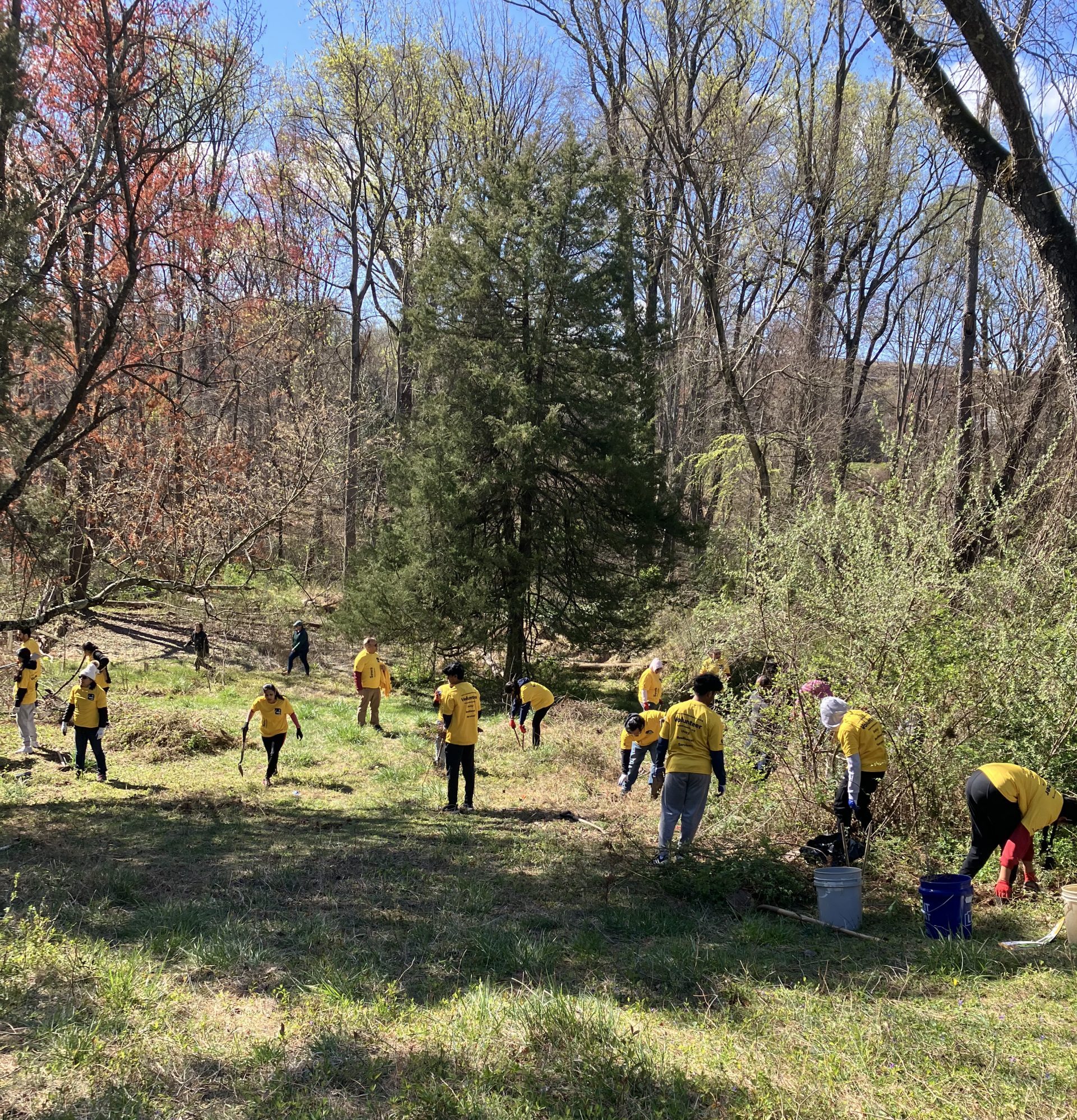
Contributed by: Dr Trish Hall, Center for Spiritual Living, Metro
Photo: SEWA International Volunteers Working in McLean Hamlet Park on April 6
Isn’t “inextricability” (incapable of being disentangled), a great word? Simply, we cannot get away from one another. The effects any of us have on the environment – on everyone and everything – affect us all directly and indirectly. What we do turns back on all of us. In the Judeo-Christian Bible, Cane asks, Am I my brother’s keeper? The answer is “Yes!” We are our brothers’ keepers and our sisters’ and mothers’ and fathers’ keepers. Everything each of us does impacts everyone, just some more than others.
The solution I am proposing is simple yet I do not claim it will be easy, although it could be. Since we are inextricably entangled in everyone else, the solution is a massive shift of consciousness. A shift at the systemic level that declares in words and more importantly in actions, that we care. We care about the environment. We care about one another. We care about the world we are leaving to our offspring. Simply, WE CARE! Some who declare that this approach is not simple, may even claim it is impossible. Believing that all things are possible, I don’t accept that perspective. I am confident that it not only is possible, it is sustainable! And attainment of sustainability requires the commitment and follow through of each person who cares!
There are millions of people and myriad programs that are doing great work and so long as their commitment and energy hold out, they are sustainable. Fortunately, new recruits come along that are dedicated and step in when those in the trenches fatigue. They are valiant, amazing people. I laud them and applaud them. So long as the supply of new people does not wane, those programs will continue.
Some, perhaps many, avowed environmentalists spend more energy focused on what other people are doing or not doing that damages the planet, than on doing something about the environment. Because of the crises cropping up on so many different fronts, this is critical work. Again, it is only sustainable so long as new crops of dedicated people continue to show up. Truly, we all need to take a stand against the violators, big and small.
I am inviting people to address the crisis at the systemic level. We need to dig deep and address the consciousness that is not only allowing the contamination of our environment, it is fostering and nurturing it. We live in a “throw away society,” that condones a disposable mentality. The ordinary, day-to-day insults to our environment result from a consciousness that stopped washing dishes. Instead, whether plastic or paper, throw it away and someone (bless the disposal facility personnel) will clean up after the general malaise and laziness. Alas, there are millions of people who simply drop their trash wherever they are. A few rationalize that what they are dropping in the streets and parks is biodegradable. Some don’t care at all. They apparently assume that the clean-up fairy will come along behind them and fix it. Some don’t even care whether it is cleaned up.
The big violators must be called out! We know we must be a clear stand for stopping the harm they are perpetrating yet feel that stopping those entities is so huge that all our feelings of inadequacy arise. Rather than remaining in a state of paralysis, I choose to turn to what I/we can do. By releasing the sense of overwhelm on the huge scale, we have more energy to devote to what we can do … and there is always something that each one of us can do to change the world and help heal the planet.
We can conserve energy by stopping finger pointing and blaming on the local level, join with others and pick up after the thought-less members of society before we drown in others’ waste. Tysons Interfaith and many other organizations do park and highway cleanups applying critically needed Band-Aids that are not ongoing remedies. They are short term and again, so long as new volunteers show up to replace burned out ones we can maintain. But maintaining is not sustaining.
A shift of consciousness is required for us to switch to a truly sustainable solution. There are valiant souls who are already taking this approach, and there are those who complain but do not act. To be sustainable, it is critical for us to embrace a “both/and” approach. There are those who educate about the fragility of our environment. Often, they and their students are the ones picking up after the contaminators. It requires a shift in consciousness from “why should I pick up after someone else,” to “it pleases me to have a pleasant environment, so I’ll pick it up.” It calls us to commit to events like river and park clean ups and even closer to home … perhaps the trash in front of the neighbor’s house.
This is where “inextricability” comes in. We cannot be separated from one another … our beings cannot be disentangled.
The indigenous peoples around the world have always known and taught their offspring that we are inseparable from our environment and from one another. Traditionally, they honor Oneness … they honor Mother Earth and all of her inhabitants. We are our brothers’, sisters’, mothers’, fathers’ and strangers’ keepers.
Whether we like it or not, we are responsible for one another. Let’s remind ourselves that we are all spiritual beings. Brene Brown defines spirituality as, “…recognizing and celebrating that we are all inextricably connected to each other by a power greater than all of us, and that our connection to that power and to one another is grounded in love and compassion. Practicing spirituality brings a sense of perspective, meaning, and purpose to our lives.”
When we immerse ourselves in the awareness of Oneness taking care of our planet and its inhabitants is no longer a burdensome responsibility. It becomes a celebration of interconnectedness and an opportunity to uplift the awareness of others. It is our opportunity until others learn and embrace their responsibility. The big question then becomes, “how are we to shift the consciousness of the world?” When I phrase it that way, it does feel immense and overwhelming. Let’s “chunk it down to bite size pieces.”
As Jana Stanfield declares in her song, “All the Good” … “I cannot do all the good the world needs, but the world needs all the good I can do.” We each must ask ourselves, “what small thing can I do?” and then do it consistently so that it grows. One of the easiest things is to embrace the concept of being an “exemplar” – a person serving as a typical example or excellent model. People learn by observation. When we are each an observable example of how we value and care for Mother Nature we are teaching others how they, too, can change the world for the better. Whether they like it or not, we have then influenced that behavior and their choices. They are different simply by being exposed to us. The ultimate result is a shift of their consciousness.
So ask yourself, “If not me, who? If not now, when? Embrace Margaret Mead’s admonition: “Never doubt that a small group of thoughtful, committed citizens can change the world; indeed, it’s the only thing that ever has.”
Let’s change the world starting right now!
This blog post is the expressed opinion of its writers and does not necessarily reflect the views of Tysons Interfaith or its members.
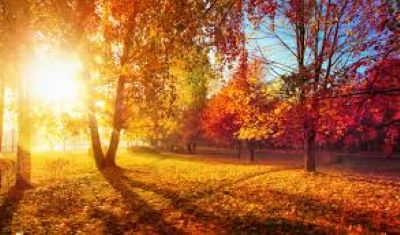
With the hustle and bustle of our work lives, our family lives, the holiday seasons, it is all too easy to drop into what some call survival mode … the put one foot in front of the other mode. We rely on habits and demands placed on us by others to move us through each day. Some of us turn down our sensory responses to avoid succumbing to overwhelm. The downside of this numbing is that we simultaneously turn down, maybe even turn off, our capacity to enjoy Life.
I invite you to take a radically different approach that avoids catastrophizing and averts all sense of overwhelm stemming from the many demands that life may be placing on you: TURN UP your sensory responses! By heightening your sensory awareness, you can engage consciously in the “Simple Practice of Noticing” … notice everything! Notice the different shades of green in the trees and bushes. Notice other colors. Notice eyes and eye colors. Notice faces – old faces, young faces, thin faces, and plump ones. Tune into bird calls – when you pay attention, they are there amid city noises. Hear the breezes. Notice the sense of freedom when you deliberately pay attention to what is rich and full in your environment … it is the Creator – God expressing as everything. Soon you will discover an easing of tension in your body that you have unknowingly taken on. With this easing, you will find that you are able to see the Sacred in and as everything.
The practice is truly simple:
- Stop everything – even it is just for a nanosecond.
- Be still for just a moment (or maybe longer because it feels so good).
- Remember ALL creation is the expression of The Creator.
- Tune up your sense of observation and let your curiosity surge.
- Challenge yourself to see the Sacred as whatever you are seeing: humans, other animals, all aspects of the natural world, human creations – art, music, buildings … everything!
- Practice … like with any new habit, you want to consciously reinforce it.
- In a very short time, you will notice that the only sense of overwhelm you are experiencing is awe and wonder! How could this much sacredness have gone unnoticed?
- Develop the habit of noticing the sacred as everything! A deep, rich sense of joy arises and your life is transformed.
This blog post is the expressed opinion of its writer and does not necessarily reflect the views of Tysons Interfaith or its members.
